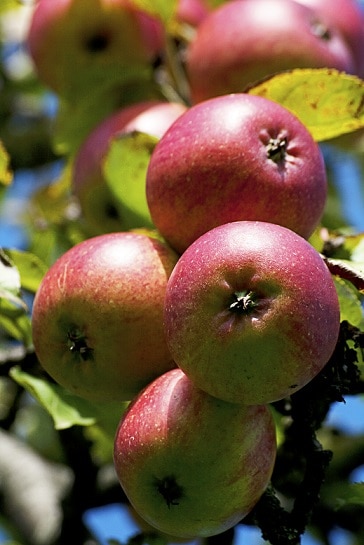 Today, we’re going to discuss a powerful supplement for clearing acne, a completely non-secret weapon which has been staring us in the face for decades. We’re going to discuss vitamin C, one of the 32 vitamins and minerals essential for human survival.
Today, we’re going to discuss a powerful supplement for clearing acne, a completely non-secret weapon which has been staring us in the face for decades. We’re going to discuss vitamin C, one of the 32 vitamins and minerals essential for human survival.
Vitamin C is possibly the cheapest and best available nutritional supplement of all time. It’s best known for immune system optimisation, destroying colds and the flu and accelerating wound healing, but the sheer power of vitamin C is monstrously underestimated.
Back in 2009, during the swine flu outbreak which supposedly nearly ended civilisation as we know it, a family man called Allan Smith lay dying in hospital, unanimously deemed a hopeless case by doctors. However, they were still reluctant to turn off life support, so at the family’s insistence, they injected him with a vitamin C megadose of 25 grams (the daily limit is 0.06 grams) twice daily. The doctors’ real plan was to prove that the vitamin C was useless.
Within 24 hours, however, Mr Smith’s lungs regained the ability to process oxygen. The doctors denied it, claiming that a passing bus was just as likely to have been his saviour, but when treatment stopped, the family’s father became close to death again. Several threats of legal action later, the vitamin C treatment was restarted and Mr Smith was discharged from hospital.
The doctors continued to blindly deny the role of vitamin C, but 70 years of data shows that megadoses are shockingly effective against many diseases, possibly even cancer…
…and unsurprisingly, megadosing vitamin C is one of my personal favourite acne strategies.
Vitamin C is a major acne antioxidant
Vitamin C is not and never has been a popular supplement among acne patients. But it certainly should be if this study is any indication:
- 60 women aged 16-22 years were divided into 4 groups: 1) obese with acne, 2) obese without acne, 3) normal weight with acne, 4) normal weight with normal skin. The results were fascinating, as acne patients averaged at 40% less vitamin C in their bloodstream compared to clear skinned patients. Beta-carotene, vitamin E, vitamin A were also lower.
The results say it all. You’d think that given how common obesity has become in the West, people would at least be getting tons of vitamin C from all that food. However, 31% of US citizens are now deficient, and apparently, acne patients are even more at risk.
Read Annihilate Your Acne – get the ultimate diet for clear and glowing skin!
The reason? Firstly, vitamin C is the number one water-soluble antioxidant in the human diet.
Antioxidants are absolutely critical for stopping acne, as they build themselves into the sebum (oil) on your face. There, they prevent a component of that sebum called squalene from oxidising and turning into squalene peroxide, a substance that blocks pores very effectively.
Vitamin C is so potent in humans that it’s been dubbed the grandfather of traditional antioxidants. It’s a major donor of electrons to free radicals, the main method that antioxidants use to deactivate them. It also increases the general flow of restoring electrons to free radicals, and protects numerous oxidised tissues like proteins and also some lipids, despite not even being fat soluble.
Vitamin C doesn’t directly prevent squalene peroxide from forming because that’s the job of fat soluble antioxidants like vitamin E. However, the more vitamin C in your bloodstream, the less free radicals there are to deplete the antioxidants which do, namely vitamin E and vitamin A. Increasing vitamin A has additional benefits as well, being the greatest nutrient in existence for lowering oil production.
Vitamin C accumulates in your face!
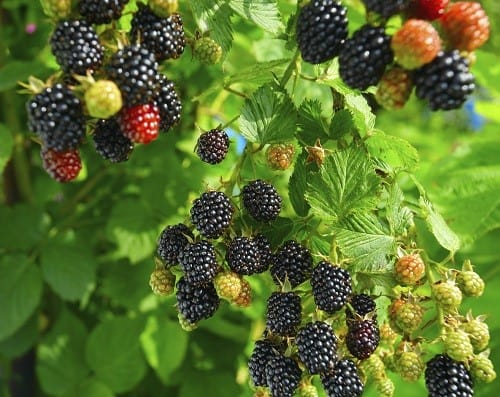 Furthermore, vitamin C can indirectly prevent blocked pores, since it gets built into the tissues of the epidermis, your skin’s outer layer. This cuts off chains of free radicals before they spread through tissues and reach your sebum.
Furthermore, vitamin C can indirectly prevent blocked pores, since it gets built into the tissues of the epidermis, your skin’s outer layer. This cuts off chains of free radicals before they spread through tissues and reach your sebum.
There’s also evidence that increasing vitamin C in the skin can directly control the release of pro-inflammatory chemicals behind acne, such as interleukin-6 and interleukin-1beta (study).
Next is sunlight prevention, and the acne inflammation from it. Vitamin C is not a true “sunscreen” because unlike vitamin A, it doesn’t directly protect cells against UV radiation…
…but its real power is just as potent: vitamin C scavenges the armies of free radicals which sunlight forms, a notorious cause of acne.
Why bread and pasta are a massive cause of acne
ONE – this study found that topical vitamin C protected against the damage of UV rays substantially. Vitamin C also fell substantially after sunlight exposure, illustrating its role.
TWO – two rat studies found that adding ascorbic acid (the most common supplementary form of vitamin C) to the diet significantly reduced the formation of tumours and dermal neoplasms triggered by UV light (study, study).
THREE – it’s well known that vitamin C transporter proteins increase in the skin during sunlight exposure (study, study), suggesting that vitamin C is an automatic response against UV light inflammation. If your diet is poor though, this automatic defence cannot kick in.
With more vitamin C in your skin, you can enjoy more time at a sunny beach, by the pool, climbing mountains in summer, etc.
Hence, you can also 1) maximise your vitamin D production, a critical nutrient for acne, and 2) start manufacturing anti-inflammatory nitric oxide, which kicks in the very second sunlight touches your skin.
Perhaps the most interesting antioxidant power of vitamin C is increasing the potency of endless other dietary antioxidants. There’s one powerful group called catechins, found in many foods but most famously green tea. Catechins can destroy numerous free radicals, but they’re also highly unstable in the human small intestine. Only 20% of the catechins in tea remain after digestion…
…but one study found that after mixing green tea with citrus juices, which are very rich in vitamin C, the bioavailability rose to 80%.
Important article – the top 7 natural topical treatments for acne
Two of the most potent catechins increased by 6 fold and 13 fold respectively. One classic catechin is epicatechin 3-gallate, which is 25 times and 100 times more potent than vitamin C and vitamin E respectively. Eating more vitamin C enhances your antioxidant supply through a variety of mechanisms.
Vitamin C slashes stress hormones!
Vitamin C has a potent and very overlooked power – being the cheapest and most effective natural stress buster alongside magnesium.
The old legends about stress causing acne are completely true. Any mental anxiety signals your adrenal glands to secrete cortisol, the main hormone behind the physiological symptoms of stress such as a racing heartbeat, higher pulse and sweaty palms.
Cortisol is safe and necessary in moderation, but it’s a nightmare when constantly elevated. One such problem is acne, via digestive difficulties and impaired wound healing. Your body understands these dangers, so it uses vitamin C to clear abnormally high cortisol levels in the blood.
Important article – the top 6 vitamins and minerals for clearing acne
Many studies show the benefits clearly. For example, some German scientists subjected 120 participants to a classic stressor, a task which combined public speaking and mathematical problems. 60 people were given large doses of vitamin C, 1000mg compared to the RDA of 60mg.
Compared to placebo takers, these people had far fewer signs of heightened stress responses, including high blood pressure and cortisol levels. The vitamin C takers even completed a survey and reported less mental stress.
This study gave 1500mg of vitamin C to 45 athletes for seven days before a race, on the day of the race, and for another two days afterwards. Other athletes received either 500 grams of vitamin C or a placebo. Context: cortisol commonly increases after intense exercise.
According to the scientists, “immediate post-race serum cortisol was significantly lower in the vitamin C 1500 group than in placebo and vitamin C 500 groups”.
Likewise, this study found that vitamin C attenuated the cortisol spike in 20 patients undertaking 90 minutes of exercise. This study noted a similarly blunted increase, and after scientists in this study gave vitamin C to 16 untrained male volunteers, “serum cortisol concentrations significantly declined… compared with baseline”.
Many similar studies have been conducted on animals, and in some, vitamin C almost totally abolished the stress responses behind acne. When under heightened stress, a goat will synthesise up to 100,000mg of vitamin C daily. Compare that with the recommended daily allowance in humans of 60mg.
Unlike animals though, we humans cannot synthesise vitamin C ourselves. We lost the ability through an unfortunate genetic mutation.
Therefore, if you’re a chronically stressed acne sufferer, it is critical to eat enough vitamin C. Human adrenal glands are largely composed of vitamin C as well, relying on the nutrient for regulating cortisol production.
Raw honey – a natural for wiping out acne bacteria
Even if you only experience mild day-to-day stress, megadoses will be an excellent preventative shield. You’ll also enjoy a calmer, happier mind, and indirect acne benefits. For instance, sky high cortisol can seriously disrupt your sleep quality, and as we discussed in my eBook, sleeping better is one of the simplest yet greatest strategies for acne.
Vitamin C – the godfather of all collagen
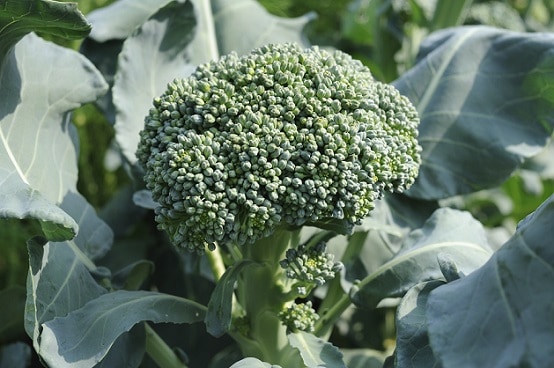 Not only can vitamin C prevent acne from being born, it can also enhance your overall skin quality.
Not only can vitamin C prevent acne from being born, it can also enhance your overall skin quality.
Collagen is the main structural protein in your skin. It provides a scaffolding around which all important proteins and tissues are built, and forms 30% of the body’s total protein. Increasing levels can prevent wrinkle formation, increase skin hydration, and have truly miraculous effects on skin tone and radiance.
These days, our collagen is being depleted fast. Cigarette smoke, marijuana smoke, air pollution and chemicals in cosmetics (a huge hidden cause of acne) can all warp collagen and make it useless. So can sunlight if you lack the natural sunscreen nutrients like vitamin A and vitamin E, which vast swathes of us do.
That’s where vitamin C steps in. All collagen begins life with the assembly of the amino acids glycine and proline into the collagen precursor procollagen. Next, the procollagen is morphed with lysine and proline by two catalysing enzymes. Vitamin C is utterly critical, because those enzymes cannot function without it.
Consider the famous disease scurvy, which plagued sailors of the British Empire for hundreds of years. In 1899, a simple vitamin C deficiency was discovered to be responsible, and all long voyage sea captains were ordered to bring crate loads of citrus fruits with them.
Scurvy begins with a lacklustre body and mind, then progresses to bleeding gums and unsightly blotches on the hands. Finally, scurvy ends with death after the blood vessels fatally weaken and collapse.
What do those symptoms have in common? They’re all caused by the weakening of structural tissues, thanks to reduced collagen production.
Without vitamin C, that effect can translate to your acne. Your skin won’t fall to pieces where you stand, but it will be weaker in the face of threats, and generally less appealing. Laying down a collagen matrix in the epidermis is also the first step in wound healing, so collagen is critical for healing old acne.
Read the eBook: learn why common vegetable oils are an acne nightmare
Luckily, the opposite is true – megadosing vitamin C can give you the collagen levels of a superhuman. I megadose on a regular basis by taking camu camu powder and I have noticed 1) extremely smooth skin, and 2) dryness going extinct, and 3) harsh moisturisers becoming pointless.
This study was a bullseye: vitamin C increased collagen synthesis during the repair of damaged skin. Vitamin C can also stabilise existing collagen and prevent its depletion.
Dietary sources of vitamin C
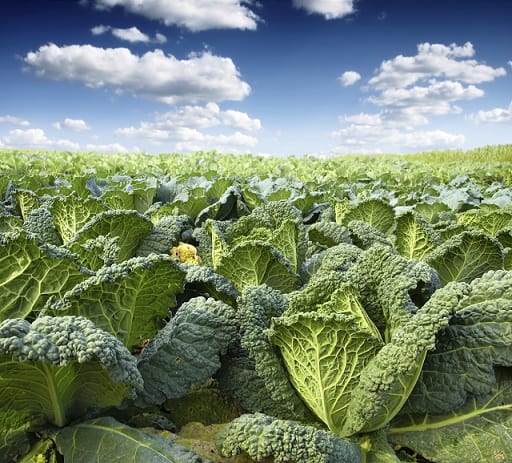 For those three touchstone reasons, it’s vital for every acne patient to formulate a diet that’s optimal for vitamin C. 30% of US adults and 1 in 7 young Canadian adults are deficient, so there’s a great chance that you personally can clear your acne with more.
For those three touchstone reasons, it’s vital for every acne patient to formulate a diet that’s optimal for vitamin C. 30% of US adults and 1 in 7 young Canadian adults are deficient, so there’s a great chance that you personally can clear your acne with more.
If you’re chronically stressed out then, vitamin C intake is a top priority. In Asia, deficiency is especially rampant in India, Pakistan, China and Malaysia.
The first step is to eat a good variety of plant foods. In nature, vitamin C is almost entirely found in fruits and vegetables with the sole exception of some seafoods such as crab (5% of RDA per 100 grams), oysters (6%) and salmon (6%). Some dense, acne-friendly and convenient sources include…
Berries – most cultivated fruits like apples and bananas are at least decent for vitamin C, but berries are the best with ease. Strawberries rule with 97% of the recommended daily allowance per 100 grams. Raspberries are next, with 43%, followed by blackberries with 35% and blueberries with 16%. Other less common berries are good sources too, including cranberries (22%) and elderberries (60%).
Don’t forget to buy organic though! This study compared organic and conventional strawberries, grown on neighbouring fields that were identical in wildlife, soil composition, local climate, etc. The organic strawberries contain 9.7% more vitamin C, 8.5% higher total antioxidants and 10.5% more phenolic antioxidants.
Furthermore, berries are the worst family of fruits for pesticide contamination, which often have strong inflammatory and hormone disrupting effects. If you’ve stumbled across wild strawberries or blackberries, then you’ll know why – they’re usually a feeding frenzy of flies and bugs.
Cruciferous vegetables – basic broccoli is even better for vitamin C than strawberries, with 148% of the RDA per 100 grams. Kale is stellar, with 200%. Spinach, cauliflower, brussel sprouts and cabbage are also excellent.
Never forget though, that the vitamin C in cruciferous vegetables is very delicate during cooking. Boiling is most notorious, because the acne nutrients leach into the water, which is then discarded. This study found that boiling broccoli depleted the vitamin C levels by 33%. Steaming is optimal for acne, and roasting is inconvenient but nevertheless effective.
Citrus fruits – the common orange is actually the world’s largest berry, and it shares the vitamin C of the more traditional varieties. 100 grams contains 88% of the RDA, 100 grams of clementine contains 81%, and satsumas contain roughly 50%.
Citrus fruits were the favoured weapons of European sailors against scurvy back in the day, precisely because they’re so convenient and well-absorbed. You don’t have to mess about with cooking either, you get the intact vitamin C eaten raw.
Potatoes – basic white potatoes are loaded with vitamin C and actually provide a big proportion of the average Westerner’s daily intake. I usually eat 400 grams of roast potatoes per serving, and that contains 128% of the RDA. Sweet potatoes are also decent.
Beware though: potatoes are also prone to vitamin C depletion when cooked. Unlike green vegetables, the optimal method is boiling. Potatoes lose plenty when microwaved, and this study found a “severe” decline in antioxidants when potatoes were baked.
Why zinc is the number one supplement for red and inflamed acne
Bell peppers – hardly a famous vitamin C source, but red, yellow and green bell peppers contain approximately twice as much as an orange. If you’re looking for tasty and enriching flavourings without resorting to neurotoxins like MSG, bell peppers are perfect. Yellow bell peppers have the most, followed by red and then green.
Don’t confuse this with black pepper, which is a healthy seasoning for acne, but rubbish for vitamin C. Once again, the organic version has more vitamin C; this Polish study found 119mg of per 100 grams in conventional bell peppers compared to 136mg in organic, and also more flavonoid antioxidants.
The best vitamin C supplement
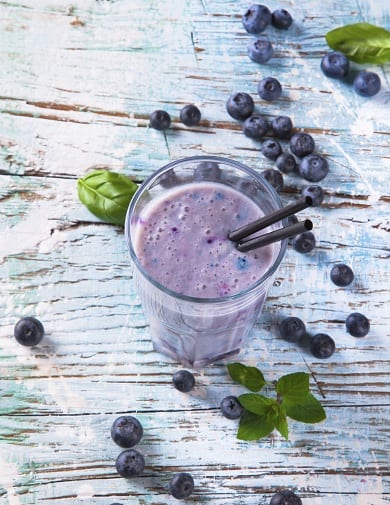 It’s incredibly easy to get to the recommended daily allowance of 60mg for both adult men and women. But there’s two problems…
It’s incredibly easy to get to the recommended daily allowance of 60mg for both adult men and women. But there’s two problems…
Firstly, the RDA itself is far too low to acquire maximum acne benefits. Goats synthesise 100,000mg a day when under stress; it’s estimated that prehistoric humans ate up to 1000mg a day in a tropical diet rich in fruits.
Secondly, vitamin C levels in market staples have plummeted since the mid-20th century. For example: a Kushi Institute analysis found a 30% decline in 12 different vegetables between 1975 and 1997. A study published in the Journal of the American College of Nutrition found a “reliable decline” in vitamin C levels across 43 different fruits and vegetables.
Cauliflower has been found to contain 40% less vitamin C compared to in 1975. Onions have lost 36%, collard greens 61.6%, cabbage 31.9%, and watercress 45.6%. Vitamin C deficiencies are worsening; one study placed it at 15% of modern US adults, compared with only 3-5% a quarter of a century ago.
How can a normal person find the quantities necessary for a shocking improvement in acne?
The answer is to take a supplement, and my favourite is easily Terrasoul Superfoods Raw Camu Camu Powder (amazon link).
This natural supplement is a dried and highly concentrated powder of the camu camu berry, a red/purple cherry-like fruit growing in the jungles of Peru. The camu camu plant (also called myrciaria dubia) grows on riversides, and is harvested by the natives using canoes. Its claim to fame is being the richest vitamin C source on Earth, with 2-3% by weight.
Read this article and learn why camu camu powder is fantastic
Hence, the concentrated powder is equally amazing; a single teaspoon, or 5 grams, can provide over 600mg, 1000% of the recommended daily allowance. Furthermore, it’s all-natural vitamin C, so it retains the enzymes and cofactors necessary for absorption in the digestive system. It also contains the amino acids valine, serine and leucine, and the acne-clearing antioxidants gallic acid and ellagic acid.
I’ve had some fantastic experiences with camu camu powder healing up persistent wounds, as I discussed here. My foot healed within 2 weeks after months of no progress. A great brand is Terrasoul Superfoods (amazon link).
Simply add camu camu powder to recipes, or mix some into a glass of water like I usually do. Be warned that the taste is extremely strong, but you get used to it.
If you’re desperate to megadose vitamin C, but too impatient for camu camu powder, then a dedicated vitamin C supplement will still work fantastically. Hence, you can try this Garden Of Life Raw Vitamin C (amazon link).
Conclusion
Megadosing vitamin C is a great strategy for preventing acne and revolutionising your overall skin tone.
Massive doses of 500-1000mg are extremely safe, as any excess vitamin C is excreted through urine. Mr Allan Smith was injected with 50,000mg daily and he recovered from swine flu. The studies showing headaches, nausea, vomiting, etc mostly used synthetic ascorbic acid, not natural vitamin C.
Don’t commit the common mistake of underestimating vitamin C for acne! It’ll be especially useful if you’re stressed out, don’t eat many fruits and vegetables, or are aged over 30 and therefore have steadily depleting collagen levels.
NEXT: learn the root causes of acne, clear your skin permanently
Thanks for reading!